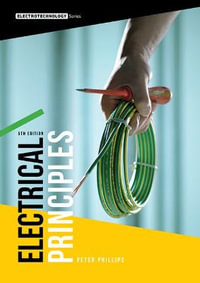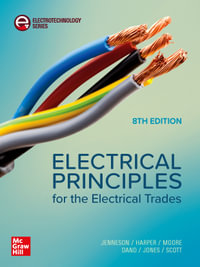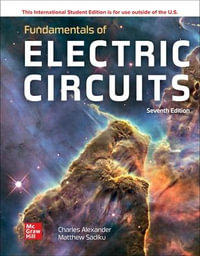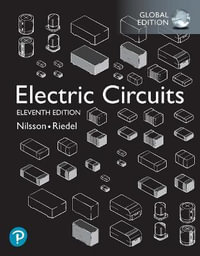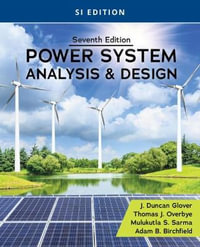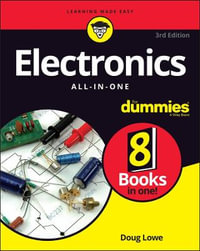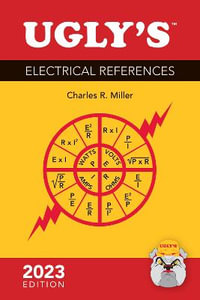| An Introduction to Memory Chip Design | p. 1 |
| Introduction | p. 1 |
| The Internal Organization of Memory Chips | p. 3 |
| The Memory Cell Array | p. 3 |
| The Peripheral Circuit | p. 5 |
| The I/O Interface Circuit | p. 6 |
| Categories of Memory Chip | p. 6 |
| General Trends in DRAM Design and Technology | p. 11 |
| The History of Memory-Cell Development | p. 11 |
| The Basic Operation of The 1-T Cell | p. 15 |
| Advances in DRAM Design and Technology | p. 19 |
| General Trends in SRAM Design and Technology | p. 24 |
| The History of Memory-Cell Development | p. 24 |
| The Basic Operation of a SRAM Cell | p. 26 |
| Advances in SRAM Design and Technology | p. 29 |
| General Trends in Non-Volatile Memory Design and Technology | p. 31 |
| The History of Memory-Cell Development | p. 31 |
| The Basic Operation of Flash Memory Cells | p. 34 |
| Advances in Flash-Memory Design and Technology | p. 46 |
| The Basics of RAM Design and Technology | p. 49 |
| Introduction | p. 49 |
| Devices | p. 49 |
| MOSFETs | p. 49 |
| Capacitors | p. 57 |
| Resistors | p. 60 |
| Wiring and Wiring Materials | p. 61 |
| Silicon Substrates and CMOS Latch-Up | p. 65 |
| Other Devices | p. 67 |
| NMOS Static Circuits | p. 67 |
| The dc Characteristics of an Inverter | p. 68 |
| The ac Characteristics of an Inverter | p. 70 |
| The Improved NMOS Static Inverter | p. 74 |
| NMOS Dynamic Circuits | p. 76 |
| The Dynamic Inverter | p. 76 |
| The Bootstrap Driver | p. 77 |
| CMOS Circuits | p. 79 |
| The dc Characteristics | p. 80 |
| The ac Characteristics | p. 82 |
| Basic Memory Circuits | p. 83 |
| The Inverter and the Basic Logic Gate | p. 83 |
| The Current Mirror | p. 83 |
| The Differential Amplifier | p. 83 |
| The Voltage Booster | p. 87 |
| The Level Shifter | p. 88 |
| The Ring Oscillator | p. 88 |
| The Counter | p. 89 |
| The Scaling Law | p. 90 |
| Constant Electric-Field Scaling | p. 90 |
| Constant Operation-Voltage Scaling | p. 92 |
| Combined Scaling | p. 92 |
| Lithography | p. 93 |
| Packaging | p. 94 |
| DRAM Circuits | p. 97 |
| Introduction | p. 97 |
| High-Density Technology | p. 98 |
| High-Performance Circuits | p. 100 |
| The catalog Specifications of the Standard DRAM | p. 102 |
| Operational Conditions | p. 102 |
| Modes of Operation and Timing Specifications | p. 105 |
| The Basic Configuration and Operation of the DRAM Chip | p. 110 |
| Chip Configuration | p. 110 |
| Address Multiplexing | p. 111 |
| Fundamental Chip Technologies | p. 113 |
| A Larger Memory Capacity and Scaled-Down Devices | p. 113 |
| High S/N Ratio Circuits | p. 116 |
| Low Power Circuits | p. 117 |
| High-Speed Circuits | p. 123 |
| The Multidivision of a Memory Array | p. 128 |
| The Multidivided Data Line and Word Line | p. 131 |
| The Multidivided Data Line | p. 132 |
| The Multidivided Word Line | p. 139 |
| Read and Relevant Circuits | p. 141 |
| The Address Buffer | p. 141 |
| The Address Decoder | p. 144 |
| The Word Driver | p. 147 |
| The Sensing Circuit | p. 157 |
| The Common I/O-Line Relevant Circuit | p. 167 |
| The Data-Output Buffer | p. 172 |
| Write and Relevant Circuits | p. 174 |
| Refresh-Relevant Circuits | p. 175 |
| Refresh Schemes | p. 175 |
| The Extension of Data-Retention Time in Active Mode | p. 176 |
| Current Reduction Circuits in Data-Retention Mode | p. 176 |
| Redundancy Techniques | p. 178 |
| Issues for Large-Memory-Capacity Chips | p. 184 |
| Intra-Subarray Replacement Redundancy | p. 185 |
| Inter-Subarray Replacement Redundancy | p. 189 |
| The Repair of dc-Characteristics Faults | p. 191 |
| On-Chip Testing Circuits | p. 192 |
| High Signal-to-Noise Ratio DRAM Design and Technology | p. 195 |
| Introduction | p. 195 |
| Trends in High S/N Ratio Design | p. 195 |
| The Signal Charge | p. 197 |
| Leakage Charge | p. 204 |
| The Soft-Error Critical Charge | p. 208 |
| The Data-Line Noise Charge | p. 210 |
| Data-Line Noise Reduction | p. 210 |
| Noise Sources and Their Reduction | p. 210 |
| Word-Line Drive Noise | p. 213 |
| Data-Line and Sense-Amplifier Imbalances | p. 217 |
| Word-Line to Data-Line Coupling Noise | p. 230 |
| Data-Line Interference Noise | p. 237 |
| Power-Supply Voltage Bounce | p. 240 |
| Variation in the Reference Voltage | p. 241 |
| Other Noises | p. 244 |
| Summary | p. 247 |
| On-Chip Voltage Generators | p. 249 |
| Introduction | p. 249 |
| The Substrate-Bias Voltage (VBB) Generator | p. 251 |
| The Roles of the VBB generator | p. 251 |
| Basic Operation and Design Issues | p. 256 |
| Power-On Characteristics | p. 258 |
| Characteristics in the High-VDD Region | p. 264 |
| The VBB Bump | p. 266 |
| Substrate-Current Generation | p. 269 |
| Triple-Well Structures | p. 272 |
| Low-Power VBB Generators | p. 273 |
| The Voltage Up-Converter | p. 276 |
| The Roles of the Voltage Up-Converter | p. 276 |
| Design Approaches and Issues | p. 278 |
| High Boost-Ratio Converters | p. 283 |
| Low-Power, High Supply Current Converters | p. 285 |
| The Voltage Down-Converter | p. 290 |
| The Roles of the Voltage Down-Converter | p. 290 |
| The Negative-Feedback Converter and Design Issues | p. 293 |
| Optimum Design | p. 297 |
| Phase Compensation | p. 301 |
| Reference-Voltage Generators | p. 316 |
| Burn-In Test Circuits | p. 323 |
| Voltage Trimming | p. 327 |
| Low-Power Circuits | p. 329 |
| The Half-VDD Generator | p. 332 |
| Examples of Advanced On-Chip Voltage Generators | p. 333 |
| High-Performance Subsystem Memories | p. 339 |
| Introduction | p. 339 |
| Hierarchical Memory Systems | p. 341 |
| Memory Hierarchy | p. 341 |
| Improvements in Memory-Subsystem Performance | p. 344 |
| Memory-Chip Performance | p. 349 |
| Memory-Subsystem Technologies | p. 354 |
| Wide-Bit I/O Chip Configurations | p. 354 |
| Parallel Operation of Multidivided Arrays | p. 354 |
| Multibank Interleaving | p. 357 |
| Synchronous Operation | p. 358 |
| Pipeline/Prefetch Operations | p. 362 |
| High-Speed Clocking Schemes | p. 363 |
| Terminated I/O Interfaces | p. 363 |
| High-Density Packaging | p. 364 |
| High-Performance Standard DRAMs | p. 365 |
| Trends in Chip Development | p. 365 |
| Synchronous DRAM | p. 368 |
| Rambus DRAM | p. 380 |
| Embedded Memories | p. 383 |
| Low-Power Memory Circuits | p. 389 |
| Introduction | p. 389 |
| Sources and Reduction of Power Dissipation in a RAM Subsystem | p. 392 |
| Wide-Bit I/O Chip Configuration | p. 393 |
| Small Package | p. 394 |
| The Low-Voltage Data-Bus Interface | p. 396 |
| Sources of Power Dissipation in the RAM Chip | p. 402 |
| Active Power Sources | p. 402 |
| Data-Retention Power Sources | p. 405 |
| Low-Power DRAM Circuits | p. 406 |
| Active Power Reduction | p. 406 |
| Data-Retention Power Reduction | p. 412 |
| Low-Power SRAM Circuits | p. 413 |
| Active Power Reduction | p. 413 |
| Data-Retention Power Reduction | p. 423 |
| Ultra-Low-Voltage Memory Circuits | p. 425 |
| Introduction | p. 425 |
| Design Issues for Ultra-Low-Voltage RAM Circuits | p. 426 |
| Reduction of the Subthreshold Current | p. 426 |
| Stable Memory-Cell Operation | p. 432 |
| Suppression of, or Compensation for, Design Parameter Variations | p. 433 |
| Power-Supply Standardization | p. 435 |
| Ultra-Low-Voltage DRAM Circuits | p. 437 |
| Gate Boosting Circuit | p. 439 |
| The Multi-VT Circuit | p. 440 |
| The Gate-Source Back-Biasing Circuit | p. 442 |
| The Well Control Circuit | p. 456 |
| The Source Control Circuit | p. 461 |
| The Well and Source Control Circuit | p. 462 |
| Ultra-Low-Voltage SRAM Circuits | p. 463 |
| Ultra-Low-Voltage SOI Circuits | p. 466 |
| References | p. 473 |
| Index | p. 489 |
| Table of Contents provided by Publisher. All Rights Reserved. |


